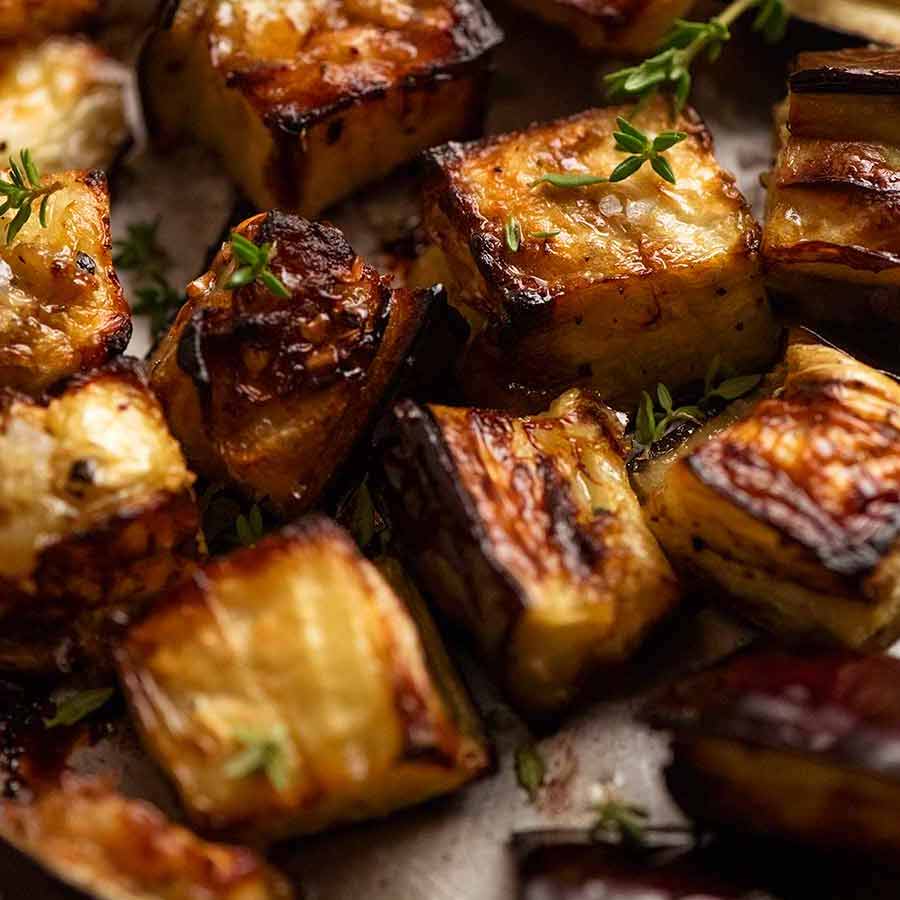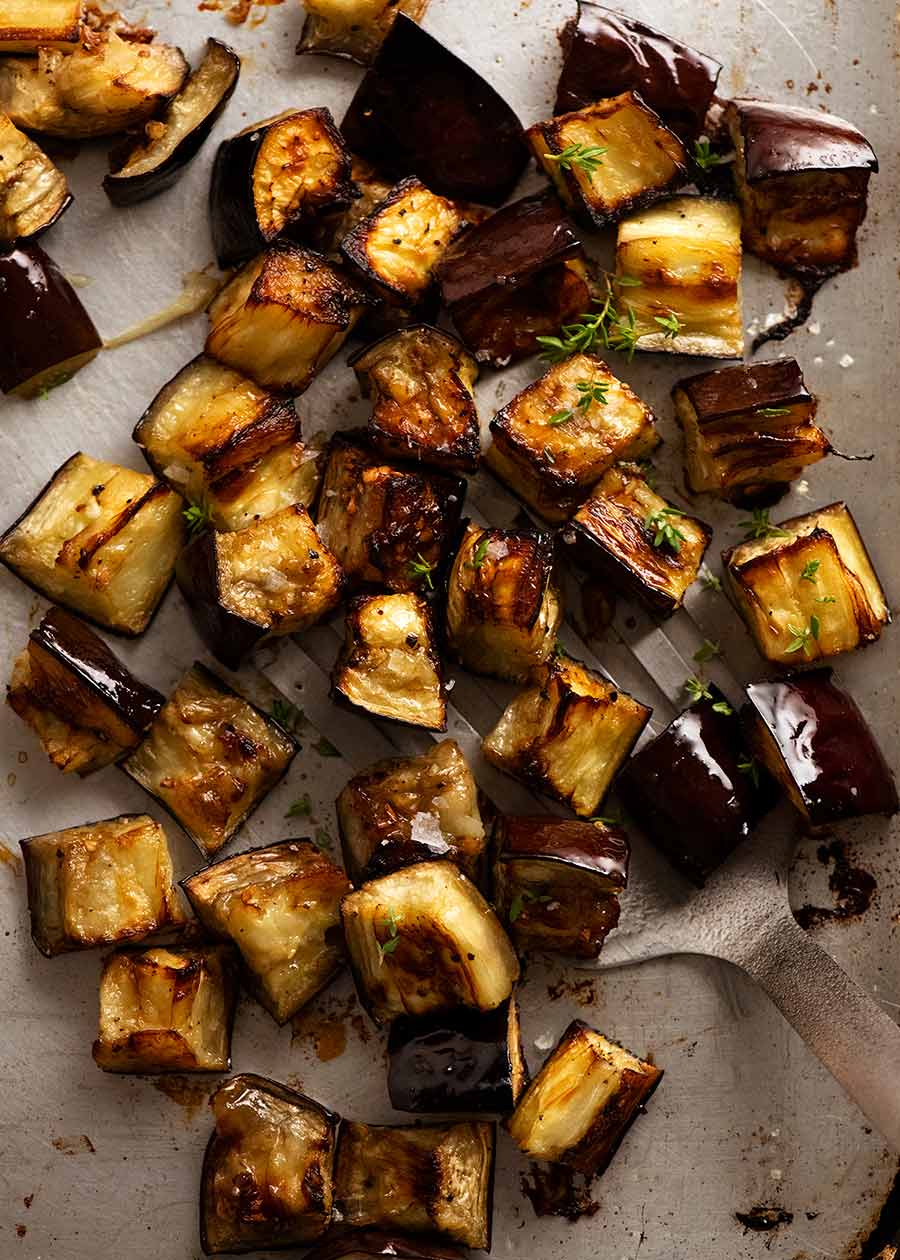Welcome to the world of culinary delights! As a professional chef, I am here to guide you through the art of baking aubergine in the oven. This versatile and nutritious vegetable, also known as eggplant, can be transformed into a mouthwatering dish that will leave you craving for more. Whether you are a seasoned cook or just starting your culinary journey, join me as we explore the secrets to achieving a perfectly baked aubergine that is tender, flavorful, and simply irresistible. Get ready to elevate your cooking skills and impress your family and friends with this delicious and wholesome dish. So, let’s preheat that oven and dive into the wonderful world of baked aubergine!
How to Bake Aubergine in the Oven: A Simple and Flavorful Recipe
Everyone loves a dish that is both delicious and healthy, and that’s exactly what you get when you bake aubergine in the oven. Also known as eggplant, aubergine is a versatile vegetable that complements a variety of flavors. In this recipe, we will show you how to bake aubergine to perfection, bringing out its natural flavors and achieving a tender and melt-in-your-mouth texture. Whether you’re a seasoned chef or a beginner in the kitchen, this recipe is sure to impress your taste buds and leave you wanting more.
Ingredients:
– 1 large aubergine (eggplant)
– 2 tablespoons olive oil
– 1 teaspoon salt
– 1/2 teaspoon black pepper
– 1 teaspoon dried oregano
– 1 teaspoon dried thyme
– 1 teaspoon paprika
– 2 garlic cloves, minced
– 1 tablespoon lemon juice
– Fresh parsley, for garnish (optional)
General Information:
– Making Difficulty: Easy
– Preparation Time: 10 minutes
– Cooking Time: 30 minutes
– Serves: 4
Instructions:
Step 1: Preheat the Oven
Preheat your oven to 200°C (400°F). This will ensure that your aubergine bakes evenly and develops a deliciously roasted flavor.
Step 2: Prepare the Aubergine
Start by washing and drying the aubergine. Then, cut off the stem and slice it lengthwise into 1/2-inch thick pieces. If your aubergine is particularly large, you can also opt to cut it into rounds. Place the slices on a cutting board or a baking tray lined with parchment paper.
Step 3: Season the Aubergine
In a small bowl, combine the olive oil, salt, black pepper, dried oregano, dried thyme, paprika, minced garlic, and lemon juice. Mix well to create a flavorful marinade. Using a brush or your hands, coat each slice of aubergine with the marinade on both sides, ensuring they are well coated.
Step 4: Let the Flavors Infuse
Once the aubergine slices are coated with the marinade, let them sit for about 10 minutes. This will allow the flavors to infuse into the vegetable, enhancing its taste and texture.
Step 5: Bake the Aubergine
Place the marinated aubergine slices on a baking tray lined with parchment paper. Make sure to leave some space between each slice to ensure even cooking. Transfer the tray to the preheated oven and bake for approximately 20-25 minutes or until the aubergine is tender and golden brown. To achieve a deeply roasted flavor, you can broil the aubergine for an additional 2-3 minutes at the end.
Step 6: Garnish and Serve
Once the aubergine is done baking, remove it from the oven and garnish it with fresh parsley if desired. The aromatic herb adds a pop of freshness to the dish. Serve the baked aubergine as a side dish, over a bed of couscous, or in a Mediterranean-inspired salad. The possibilities are endless!
Step 7: Enjoy!
Now it’s time to savor the fruits of your labor. Take a moment to appreciate the delicious aroma and beautiful colors of the baked aubergine. Each bite should bring together the smoky flavors of the roasted vegetable with the herb-infused marinade. Truly, a delectable treat for your taste buds!
Baking aubergine in the oven is not only a simple and straightforward process but also a healthy cooking method that requires minimum oil. By following this recipe, you can enjoy a flavorful and nutritious dish without any hassle. Feel free to experiment with different herbs and spices to suit your taste preferences. Enjoy the versatility of aubergine by adding it to sandwiches, pasta dishes, or even as a topping for pizzas. So, roll up your sleeves, preheat your oven, and let’s get cooking!
Important Things to Keep in Mind: How to Bake Aubergine in the Oven
Indulging in a luscious, melt-in-your-mouth aubergine dish is truly a delight. Whether you’re a seasoned chef or a novice in the kitchen, knowing how to bake aubergine in the oven is a skill worth mastering. This versatile vegetable takes on a whole new level of flavor and texture when baked to perfection. Here are a few important things to keep in mind to ensure your aubergine dish turns out absolutely fabulous.
1. Choose the Right Aubergine
Before you even start prepping your aubergine for the oven, it’s crucial to select the right one. Look for aubergines that are firm, with smooth and shiny skin. Avoid any with blemishes, bruises, or overly soft spots. Smaller aubergines tend to be less bitter, making them a better choice for baking. Additionally, consider the variety of aubergine you’re using. The classic purple variety works well in most recipes, while the slender Japanese or Chinese eggplants are ideal for certain dishes.
2. Don’t Forget the Salting
Aubergines have a natural bitterness to them, but salting can help reduce it significantly while also drawing out any excess moisture. Begin by slicing or cubing your aubergines and then sprinkle them with a generous amount of sea salt. Let them sit in a colander for about 30 minutes, allowing the salt to work its magic. Rinse the salt off and gently pat the aubergines dry before proceeding with the recipe. Salting is an essential step to achieve a more tender, less bitter final result.
3. Experiment with Seasonings
While aubergine can hold its own in terms of flavor, the right seasonings can take it to a whole new level. Consider adding a combination of herbs, spices, and aromatics to enhance its taste profile. Classic choices include garlic, thyme, rosemary, and balsamic vinegar. You can also try a Middle Eastern twist with cumin, coriander, and paprika. Don’t be afraid to get creative and let your taste buds guide you. Remember to sprinkle your seasonings evenly over the aubergine before baking to ensure a well-balanced flavor.
4. Master the Baking Technique
The key to perfectly baked aubergine lies in the technique. Preheat your oven to around 200°C (400°F) and arrange your aubergine slices or cubes on a baking sheet lined with parchment paper. Drizzle them with a high-quality olive oil and toss them gently to ensure all sides are lightly coated. Whether you’re baking slices or cubes, make sure they are spread out in a single layer to promote even cooking. For slices, bake them for about 25-30 minutes, flipping halfway through. For cubes, it may take around 30-35 minutes, giving them a stir once or twice during the baking process. Keep a close eye on them to prevent overcooking.
In conclusion, mastering the art of baking aubergine in the oven opens up a world of culinary possibilities. Remember to choose the right aubergine, take the time to salt it, experiment with seasonings, and perfect your baking technique. With these essential tips in mind, you’ll be able to create delectable dishes that will tantalize your taste buds and impress your guests. So, roll up your sleeves, preheat that oven, and let the magic begin!
Frequently Asked Questions
Whether you are a beginner in the kitchen or looking for new ways to cook your favorite vegetable, baking aubergine in the oven can be a delicious and healthy option. Here are some common questions about how to bake aubergine in the oven.
1. Can I eat the skin of the aubergine after baking?
Absolutely! The skin of the aubergine becomes soft and tender when baked, making it completely edible. In fact, the skin adds a nice texture and flavor to the dish. Just be sure to wash the aubergine thoroughly before baking to remove any dirt or residue.
If you prefer a smoother texture, you can peel the skin before baking. However, keep in mind that you will lose some of the nutritional benefits that the skin provides, such as fiber and antioxidants.
2. Do I need to preheat the oven before baking aubergine?
Yes, preheating the oven is an essential step when baking aubergine. Preheating ensures that the oven reaches the desired temperature before you place the aubergine inside. This helps to ensure even cooking and proper browning.
It is generally recommended to preheat the oven to around 200°C (400°F) before baking aubergine. This temperature allows the aubergine to cook evenly and develop a delicious golden-brown exterior.
3. How should I prepare the aubergine before baking?
Prior to baking, it is a good idea to slice the aubergine into desired thickness, usually around 1/2 inch. This allows the heat to penetrate evenly throughout the vegetable, resulting in a more consistent bake. You can also choose to leave the aubergine whole or cut it into halves or quarters.
Additionally, it is recommended to salt the sliced aubergine and let it sit for about 30 minutes before baking. This helps to draw out any excess moisture, resulting in a firmer texture and preventing the aubergine from becoming mushy.
4. How long does it take to bake aubergine in the oven?
The baking time for aubergine can vary depending on the size and thickness of the slices, as well as the desired texture. Generally, it takes around 25-30 minutes to bake sliced aubergine at 200°C (400°F) until it is tender and lightly browned.
However, if you prefer a softer texture or if you are baking a whole aubergine, the cooking time may be longer, around 40-45 minutes. It’s always a good idea to check the aubergine periodically and adjust the baking time accordingly to achieve your desired result.
5. Can I season the aubergine before baking?
Absolutely! Seasoning the aubergine before baking can enhance its flavor and create a more delicious dish. You can use a variety of herbs and spices such as garlic powder, dried oregano, paprika, or even a sprinkle of salt and pepper.
Before applying any seasonings, make sure to lightly brush the aubergine slices with olive oil to prevent them from sticking to the baking sheet and to ensure a better texture. The oil also helps the seasonings to adhere to the aubergine during baking.

